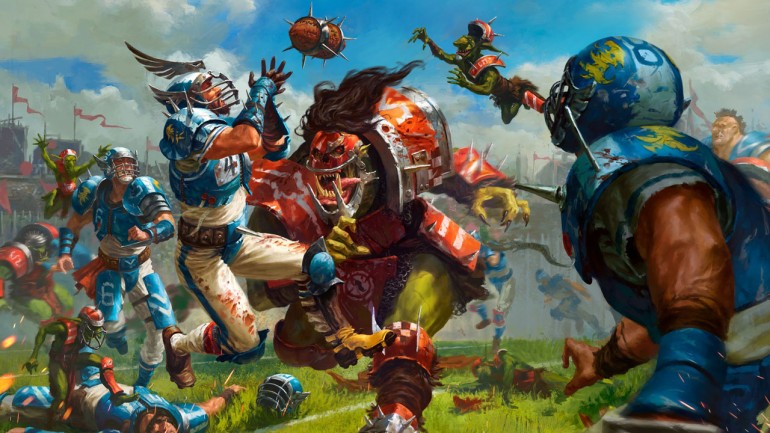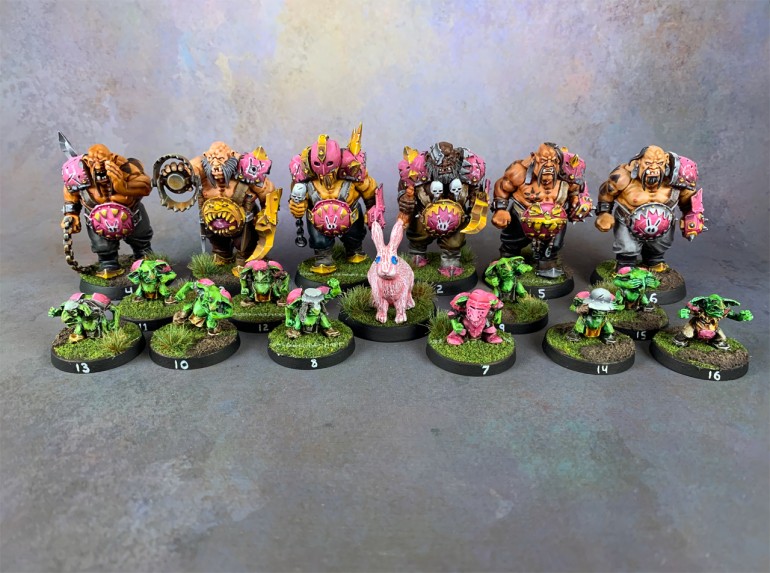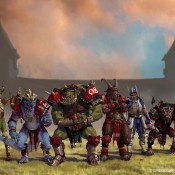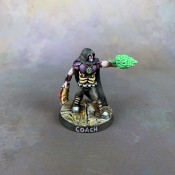These are Blood Bowl tips that I’ve learned through years of gaming, be it online or tabletop. These tips are applicable to both versions of the game, however, I am discussing tabletop today.
I want to share with you all those things I’ve learned from hundreds of games of Blood Bowl that have made me a better player. These tips are great for beginners, but will also help out some veteran players as well.
Don’t Blame the Dice
Blood Bowl is a game that’s very much dependent on the dice. A bad game of rolling can really make it a struggle. However, losing a game is never entirely the fault of the dice.
Mitigation
Blood Bowl is a game of mitigation – performing safe actions first and minimizing risk.
You should, when at all possible, be performing actions first that do not require dice rolls. Things like moving players and getting up prone players.
From there you should be rolling dice on things that have the highest success rate, again pending what’s going on. Roll those 2D blocks before you have to make a 1D block. I only recommend a 1D block if you need it to succeed, or it won’t impact your play.
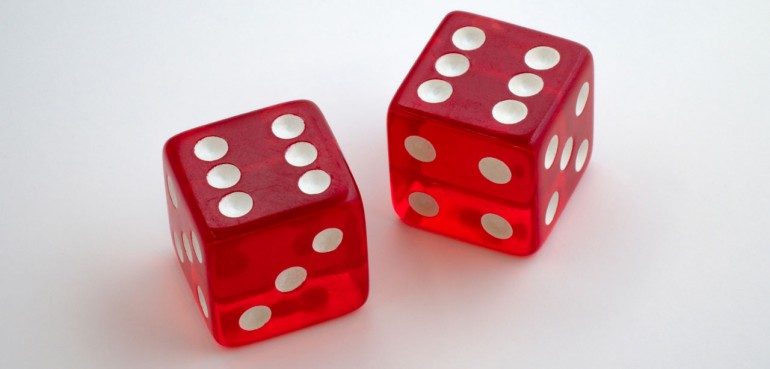
This one I can’t stress enough, sometimes it’s better to not roll dice at all. Just because you could make a block or a blitz doesn’t mean you should. You should only be rolling dice when you need those actions to work in order to proceed your play. If what you’re about to roll won’t impact what you’re doing then consider ignoring it.
Now, this is even more true with big guys who have detrimental traits like Bonehead, Wild Animal, Really Stupid, and Loner. Your Ogre who is ready to smash someone could suddenly go Bonehead and open up a lane for your opponent to come smash your ball carrier.
Just realize that dice are dice, meaning random, and your best bet to winning a game is to minimize how often you roll and what you roll. I’ve seen far too many games lost by players making non vital rolls just because they could.
Know the Odds
I’ve played a lot of new players who will throw 1D blocks with a player of theirs that has no mitigating skills like block or wrestle.
A Blood Bowl block die has: 1 defender down, 1 defender stumbles, 1 both down, 1 attacker down, and 2 pushes. This means the block will fail on both down or attacker down, a 33% chance of failure.
The chance of failure is the same if the other player has block. The only change is that both down only puts you down and not both of you.
Knowing those odds before you consider making that block is useful information. Obviously a 66% chance of success isn’t bad, but unless that block is needed to score and win the game then you’re best not to do it.
Running with other typical scenarios.
The odds of a 1D block succeeding when you have block or wrestle and the opposing player doesn’t is 5 in 6, or 83%. This is what makes Dwarves and Norse brutal in early league play.
The odds of a 1D block succeeding when both players have block or wrestle is 2 in 3 or 66%. Note that it’s only a 1 in 6 (17%) chance you go down though.
Odds are just as useful information for any dice rolls. Like knowing an AG4 player has a 5 in 6 (83%) chance of dodging into an open space is good to know (2+). The odds of making that dodge into one tackle zone is 66% since that requires a 3+. However, an AG5 player can dodge into a single tackle zone with a 83% chance of success (2+).
You don’t need to be statistician to play Blood Bowl. Just keep these things in mind when you’re trying planning out strategies. A good general rule is that the less dice you have to roll the better the odds are.
For example, if you’ve got two possible ways to score and one method requires 2 rolls, and the other requires 4 rolls, but those rolls have better odds, you’re still more likely to succeed with the plan only requiring 2 rolls.
This isn’t 100% true, as actual odds do matter here, but as a general rule if you don’t feel like figuring out the exact chances – it’s solid advice.
Think About Those Rerolls
If I had a nickel for every time I’ve seen a coach use a reroll on something pointless then I’d be a millionaire. Seriously!
I know the natural reaction to a bad block roll is to use a reroll but think about it first. Will failing that block endanger your play? If it won’t then don’t use a reroll on it.
Did that dodge you just fail mean you can’t score or stop the opponent? No? Don’t reroll it!
In short, if a failed action won’t ruin your position or play then just let it go. Save those rerolls for the actions that really matter, not the ones you wish didn’t happen.
The Rule of 2
The Rule of 2 is what I call what I’m about to cover. However, it’s very likely that there’s a term for this as I can’t be the first to talk about this.
Gaps
The number 2 has a lot of value in the game. For example, placing your players 2 squares apart means the opponent can’t pass between them; a blitz would be needed to clear a path.
Columns
If you’re trying to stop your opponent from running the ball, then setting up a column defense is your best bet.
What you do is place your players 1 square from the opponent, so a blitz is needed to block you. Those players are 2 squares from each other in a column and also 2 deep.
Here’s what I’m talking about to give a visual representation.
The B is the ball carrier and there is a cage around him/her.
With a setup like this your opponent has to blitz you to make a block. Even if he/she does, there’s another of your players behind that one. The furthest your opponent can advance against this is 2 squares.
You have 1 player here that you could place somewhere to put pressure on them, or to hang back and swing in to fill a gap or give support.
Now, this is in a perfect game where you can line up exactly as you want to like this. That’s hardly ever the case.
Most often you won’t get to spread the whole pitch like this, and very rarely is your defense so symmetrical.
Regardless, the concept is the same whether you can only manage 2-3 columns, or the line is a bit broken, etc. Make them have to earn every single square they move.
Kickoff Defense
Let’s see, 2 is also how many squares back from the line of scrimmage you should be when on defense when placing players in the wide zones. First up, you almost never want to place players on the line in a wide zone. I know it seems like you’re putting pressure on the other coach, but mostly you’re setting yourself up to get seriously blocked.
There are times this makes sense, but it’s the exception, not the norm.
Now, if you’re only 1 square back from the line and a Quick Snap is rolled on kickoff, then other coach can move those players up 1 square and mark you.
Then that coach needs only move a few other players forward to get assists and start blocking you for an advantage.

If you’re 2 squares back from the line on the wide zones then a Quick Snap won’t see you get marked up and blocked.
Defense in General
There’s a lot more that can be said on setting up defense. It’s an area I see a lot of players struggle.
You have to think of it like American Football where there are different defensive formations for different situations: 3-4, 4-3, Nickel, Dime, etc.
In Blood Bowl you’ll hear of 3-4-4, 3-4-2-2, Chevron, etc. Same idea.
You have to put thought into your setup and not just randomly place players on the pitch.
I recommend reading the article on FUMBBL about defensive setups for more depth on the topic.
This is another great article. It’s from the Blood Bowl PlayerBook that covers defensive and offensive setups.
Blocking
This one is obvious, but it’s just another of the magical 2s I’m talking about.
When you’re blocking you always want a block advantage. If you’re blocking someone the same strength as you, then you need an assist to get a 2D block, IE: 2 players vs 1.
Always Expect the Blitz
Every single time you setup to receive the ball you need to expect a Blitz result. A Blitz on kickoff can ruin the best laid plans, but you can minimize it by assuming it’s coming.
I’ve played games where I got lucky and got 2 Blitzes. In that game I devastated my opponent because he never set up expecting it. I was able to freely run into his backfield and destroy his offense.
When you setup to receive, make sure you’ve got players back near your ball carrier screening. There should be no open path to your backfield.
Setup so you’ve got 2 square gaps between players so someone can’t just run in freely. Force your opponent to have to use a Blitz action to get to you. Even then you’ve got a screen to keep them back.
There’s a great article on FUMBBL about offensive setups I suggest you check out.
Down and Out? Throw a Pass!
Very rarely in a game of Blood Bowl are you out of the game. Most teams are capable of scoring in 2 turns, some even in 1 turn.
Countless, and I mean countless, times have I played someone who was down a touchdown and receiving the ball with a few turns left. Instead of setting up for a passing play, they just did the usual of caging up the ball like they are somehow going to get down the field in 3 turns. I just shook my head every time.
It doesn’t matter what team you’re playing, if you’ve got 2-3 turns left, or just need to try and catch-up in general, set up a passing play!
How to Setup a Pass
It’s easy to set up for a pass. There’s nuances for sure, but in general put your fast players in the wide zones on the line. Put a potential thrower back to get the ball and rush forward.
When your turn starts, use a Blitz to create an opening and drive receivers through it. Make sure to keep your receivers spread out though so the other coach can’t easily shut them down.
If you’re a bashy team, destroy the line of scrimmage and send players down the middle.
In general, send receivers down both sides of the field, and middle if you can. Spread out and mark up the other team with slower players so they can’t chase down your receivers.
If you get enough receivers down the field, then you force the other coach to engage and deal with them. This leaves your thrower safe in the backfield.
Helping the Thrower and Movement
It’s also helpful to have other players near your thrower. You may need to handoff to move the ball forward to throw it easier. You can get a ton of field movement by running up with your ball carrier, handing off, running up, and then throwing the ball.
This means you might want to pick up the ball with someone other than your thrower. That player gets the ball and moves up. Then he/she hands off to the thrower, then the thrower moves up to pass.
Just remember, passing is always an option. It may not be ideal, but it’s the fastest way to score in Blood Bowl. Just ask any Elf team.
Stalling is a Legitimate Tactic
Just because you can score in 1-2 turns doesn’t mean you should. If scoring the next touchdown puts you in the lead, and you’re near the end of the half or game, then get yourself near the endzone with some protection and stall.
Every chance you give the other coach of scoring is a chance you have of losing the lead. It’s true that some coaches hate stalling and feel it’s a cheap strategy, but it’s a strategy none-the-less and one that can win you a critical game. Learn to use it.
Fouling is Fair
Along the same lines as something some players hate to see or do is fouling.
Fouling is very much Blood Bowl. It’s a game of carnage and violence. Taking the opportunity to put a player out of the next turn, or maybe even the game, is something that should always be considered.
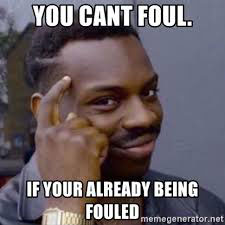
You have to get over your dislike of the tactic and realize its value. Fouling a player could mean the difference between scoring and winning the game or losing. It’s a part of the game, it’s in the rules, embrace it.
Don’t Use Star Players
This is in regards to league play and not tournaments. That being, just avoid inducing a Star Player.
In a league you are developing your team over a season. You’re playing the long game, not the short game. Therefore, you want to develop your team as much as you can during that season so come playoffs you’re in good shape.
Star Players are great and can definitely get you a win, however, they are also hogging the SPP (star player points) and that’s SPP not going to your players. If you start relying on Star Players for wins then you’ll find yourself struggling come playoffs where they can’t be used.
Buy rerolls, an Apothecary, Wizard, Kegs, etc. with that inducement cash.
Now, an exception to this would be if the match you’re playing is what determines if you get into the playoffs. Then a Star Player might be exactly what you need. In any other circumstance I just don’t recommend it.
Don’t Play Favorites
We all have our favorite players on our teams. What you don’t want to do though is reserve certain actions only for those players.
Say you’ve got a player who is great at blitzing – whatever the skills are they have. If you need to make a Blitz and you’ve got a better positioned player to do it then use that player. Don’t go out of your way to try and get your favorite blitzer over there, especially if it’s going to require rolls to do it.
The same can be said for anything, be it running the ball, throwing, etc.
Remember, you have a team and not just a few good players. Sometimes you’ve got to pick up the ball with a player who doesn’t have Sure Hands, or make a Blitz with a player who doesn’t have Mighty Blow, or Catch the ball with a player who doesn’t have Catch; that’s fine.
The coaches that do the best in this awesome game are the ones who are capable of adapting and do not rely on certain players for certain situations.
Spread the SPP Love
Relating to Star Players and not playing favorites is spreading around the SPP (star player points).
It can be tempting to build up 1-2 really great players on your team, but you really should spread the SPP around your team as much as you can.
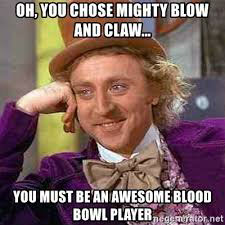
The problem with building up a couple of good players is that they could be taken out of the game, or even killed at a moment’s notice. It’s Blood Bowl after all. Then you’ll find yourself struggling because the 1-2 good players you have aren’t there to carry your team.
Spreading around the SPP isn’t always easy. Not everyone is good at throwing, catching, or running the ball in for a TD. Not all players are capable of causing casualties either.
However, when it comes time to award MVP you have the ability to put forward players who could use a boost. Put up those players struggling to get SPP and level them through MVP if that’s your only option.
A team that has a lot of players with 1 extra skill is far better than a team with 1-2 players with 2-3 skills. The more you can round out your team the better off you’ll be.
I talk about this and TV bloat in another article aimed at helping you manage your team. Managing your team is an important element to Blood Bowl.
Find a Team that Suits You
This one can be tricky, especially if you’re new. There are 24 official teams in the game, and 26 if you count player created teams. It’s not always easy to find the team that truly suits you.
That being said, there’s a lot you can determine pretty early on. Once you’ve got some games under your belt you’ll get a feel for the style of play you enjoy.
Now, if you’re new then I do recommend starting with a beginner friendly team, however, if you’d rather jump right in, or you’ve already got some experience, then read on.
- Do you like running the ball?
- Do you prefer to throw?
- Do you like a bashy team or a team that’s more finesse?
- Do you like speed or is a slow moving wall more your style?
- Do you like a team with a clear structure or more of a blank slate?
That’s not an extensive list, just some things to get you thinking.
Narrowing it Down
Once you work things like that you then teams will start to surface for you. If you want a bashy team then you aren’t going to play Elves. If you want a throwing team then you aren’t going to play Ogres.
Narrowing it down from there will probably require some experimenting. If you don’t have the money to buy teams just to try (and who does?), then just use what you have and proxy them against a buddy to test it out. Get a feel for how that team plays out and go from there.
As with any tabletop miniature game, I recommend getting a team that suits you and you like the looks of because you’re going to be playing that team a lot and looking at those models.
If you pick a team that’s a great team and wins a lot of games, but it’s not your style and you don’t care for the miniatures, then you aren’t going to have a lot of interest in the game in general.
Plus, it’s just easier and way more fun to play a team that suits you. A team should feel like an extension of yourself on the pitch and not like you’re writing left-handed when you’re a right-hander.
You’re going to get way more enjoyment out of the game this way, win or lose – trust me.
Check Out BB Tactics
This is a great website you should really look at if you haven’t. This site is a bit dated but still very relevant even with Blood Bowl 2016.
On BB Tactics you will find articles on starting rosters, team development, player development, skill information, and a lot more.
I can’t tell you how much this website helped me when I started learning the game, and it’s still a website I frequent today.
Conclusion
I imagine I could come up with a lot more to cover but I feel this pretty well sums up the things I feel are most important.
Blood Bowl is a really fun game but it can be frustrating at times. Hopefully my advice helps a few people out and makes those next games a bit easier.
Blood Bowl Stuff
- Creative Twilight’s Future and My Thoughts (Feedback Welcomed!) - December 4, 2021
- My Top Gift Ideas for Miniature Painters & Hobbyists + Gifts to Avoid - December 2, 2021
- The Year That Was 2020 and Where I’ve Been - January 17, 2021

